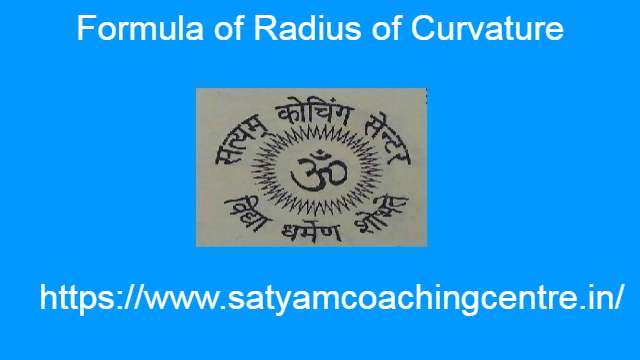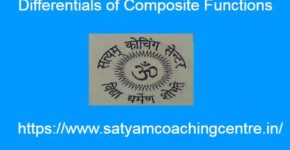Integration with Trig Identities
1.त्रिकोणमितीय सर्वसमिकाओं के साथ समाकलन (Integration with Trig Identities),त्रिकोणमितीय सर्वसमिकाओं द्वारा समाकलन (Integration by Trigonometric Identities):
त्रिकोणमितीय सर्वसमिकाओं के साथ समाकलन (Integration with Trig Identities ):कई बार समाकलन में ऐसे त्रिकोणमितीय फलन विद्यमान होते हैं जिन्हें त्रिकोणमिति सर्वसमिकाओं का उपयोग कर समाकलन योग्य बना लिया जाता है,फिर आवश्यकता अनुसार प्रतिस्थापन कर समाकलन किया जाता है।
त्रिकोणमितीय सर्वसमिकाओं का उपयोग करके त्रिकोणमितीय फलनों से जुड़े कुछ इंटीग्रल का मूल्यांकन किया जा सकता है।ये इंटीग्रैंड को एक वैकल्पिक रूप में लिखने की अनुमति देते हैं जो समाकलन के लिए अधिक अनुकूल हो सकता है।sin2x cos2 x और sin3x cos4x के रूप के फलनों को समाकलन करने के लिए त्रिकोणमितीय सर्वसमिका का उपयोग करें।
त्रिकोणमितीय सर्वसमिकाएं (Trigonometric Identities):
(1) \sin (A \pm B)=\sin A \cos B \pm \sin B \cos A \\ (2) \cos (A \pm B)=\cos A \cos B \mp \sin A \sin B \\ (3) \tan (A \pm B)=\frac{\tan A \pm \tan B}{1 \mp \tan A \tan B} \\ (4) \cot (A \pm B)=\frac{\cot A \cot B \pm 1}{\cot B \pm \cot A} \\ (5) 2 \sin A \cos B=\sin (A+B)+\sin (A-B) \\ (6) 2 \cos A \sin B=\sin (A+B)-\sin (A-B) \\ (7) 2 \cos A \cos B=\cos (A+B)+\cos (A-B) \\ (8) 2 \sin A \sin B=\cos (A-B)-\cos (A+B) \\ (9) \sin C+\sin D=2 \sin \left(\frac{C+D}{2}\right) \cdot \cos (\frac{C-D}{2}) \\ (10) \sin C-\sin D=2 \cos \left(\frac{C+D}{2}\right) \cdot \sin \left(\frac{C-D}{2}\right) \\ (11) \cos C+\cos D=2 \cos \left(\frac{C+D}{2}\right) \cos \left(\frac{C-D}{2}\right) \\ (12) \cos C-\cos D=2 \sin \left(\frac{C+D}{2}\right) \sin \left(\frac{D-c}{2}\right) \\ (13) \tan 3 A=\frac{3 \tan A-\tan ^{3} A} {1-3 \tan ^{2} A} \\ (14) \sin A=2 \sin \left(\frac{A}{2}\right) \cos \left(\frac{A}{2}\right) \\ (15) \cos A=\cos ^{2} \frac{A}{2}-\sin ^{2} \frac{A}{2}=2 \cos ^{2} \frac{A}{2}-1=1-2 \sin ^{2} \frac{A}{2} \\ (16) \tan A =\frac{2 \tan \frac{A}{2}}{1-\tan ^{2} \frac{A}{2}} \\ (17) \sin A =\frac{2 \tan \frac{A}{2}}{1+\tan ^{2} \frac{A}{2}} \\ (18) \cos A =\frac{1-\tan ^{2} \frac{A}{2}}{1+\tan ^{2} \frac{A}{2}}
आपको यह जानकारी रोचक व ज्ञानवर्धक लगे तो अपने मित्रों के साथ इस गणित के आर्टिकल को शेयर करें ।यदि आप इस वेबसाइट पर पहली बार आए हैं तो वेबसाइट को फॉलो करें और ईमेल सब्सक्रिप्शन को भी फॉलो करें जिससे नए आर्टिकल का नोटिफिकेशन आपको मिल सके ।यदि आर्टिकल पसन्द आए तो अपने मित्रों के साथ शेयर और लाईक करें जिससे वे भी लाभ उठाए ।आपकी कोई समस्या हो या कोई सुझाव देना चाहते हैं तो कमेंट करके बताएं।इस आर्टिकल को पूरा पढ़ें।
Also Read This Article:-Integration of Irrational Functions
2.त्रिकोणमितीय सर्वसमिकाओं के साथ समाकलन के उदाहरण (Integration with Trig Identities Examples):
निम्नलिखित का x के सापेक्ष समाकलन कीजिए:
(Integrate the following with respect to x):
Example:1. x \sin x^{2}
Solution: x \sin x^{2} \\ I=\int x \sin x^{2} d x\\ \text { Put } x^{2}=t \Rightarrow 2 x d x=d t\\ I=\frac{1}{2} \int \sin t d t \\ I=-\frac{1}{2} \cos t+c=-\frac{1}{2} \cos x^{2}+c
Example:2.x \sqrt{x^{2}+1}
Solution:x \sqrt{x^{2}+1} \\ I=\int x \sqrt{x^{2}+1} d x \\ \text { put } x=\tan \theta \Rightarrow d x=\sec ^{2} \theta d \theta \\ I=\int \tan \theta \sqrt{1+\tan ^{2} \theta} \sec ^{2} \theta \\ =\tan \theta \cdot \sec \theta \sec ^{2} \theta d \theta \\ =\int \sec ^{2} \theta(\sec \theta \tan \theta) d \theta \\ \text { Put } \sec \theta=u \Rightarrow \sec \theta \tan \theta d \theta=d u \\ I=\int u^{2} d u \\ \Rightarrow I=\frac{1}{3} u^{3}+c \\ I=\frac{1}{3} \sec ^{3} \theta+c \\ I= \frac{1}{3}\left(1+x^{2}\right)^{\frac{3}{2}}+c
Example:3.\frac{e^{x}}{\sqrt{\left(1+e^{x}\right)}}
Solution:\frac{e^{x}}{\sqrt{1+e^{x}}} \\ I=\int \frac{e^{x}}{\sqrt{1+e^{x}}} \\ \text { put } 1+e^{x}=t \\ e^{x} d x=d t \\ I =\int \frac{1}{\sqrt{t}} d t \\ =\int t^{-\frac{1}{2}} d t \\ =2 \sqrt{t}+c \\ =2 \sqrt{1+e^{x}}+c
Example:4.\sqrt{e^{x}+1}
Solution:I=\int \sqrt{e^{x}+1} d x\\ \text { Put } e^{x}+1=t^{2} \Rightarrow e^{x} d x=2 t d t\\ =\int \sqrt{t^{2}} \cdot \frac{2 t d t}{e^{x}}\\ =\int \frac{2 t^{2}}{t^{2}-1} d t\\ =\int\left(2+\frac{2}{t^{2}-1}\right) d t\\ =\int 2 d t+\int \frac{2}{t^{2}-1} d t\\ =2 t+\frac{2}{2} \log \left(\frac{t-1}{t+1}\right)+c \\ =2 \sqrt{e^{x}+1}+\log \left(\frac{\sqrt{e^{x} +1} -1}{\sqrt{e^{x}+1}+1}\right)+c\\ =2 \sqrt{e^{x}+1}+\log \frac{\left(\sqrt{e^{x} +1}-1\right)\left( \sqrt{e^{x}+1}+ 1\right)}{\left(\sqrt{e^{x}+1}+1\right)\left(\sqrt{e^{x}+1}+1\right)} \\ \Rightarrow I=2 \sqrt{e^{x}+1}+\log \left( \frac{e^{x} +1-1}{e^{x}+1}\right)+c \\ \Rightarrow I=2 \sqrt{e^{x}+1}+\log \left(\frac{e^{x}}{e^{x}+2}\right)+c
Example:5.\frac{(1+\log x)^{3}}{x}
Solution:\frac{(1+\log x)^{3}}{x} \\ I=\int \frac{(1+x \log x)^{3}}{x} d x \\ \text{put } (1+\log x)=t \Rightarrow x d x=d t \\ I=\int t^{3} d t \\ I=\frac{t^{4}}{4}+c \\ I=\frac{1}{4}(1+\log x)^{4}+c
Example:6.\frac{1}{\sqrt{1+\cos 2 x}}
Solution:\frac{1}{\sqrt{1+\cos 2 x}} \\ \text { I }=\int \frac{1}{\sqrt{1+\cos 2 x}} dx \\ =\int \frac{1}{\sqrt{2 \cos ^{2} x}} d x \\ =\frac{1}{\sqrt{2}} \int \frac{1}{\sqrt{\cos ^{2} x}} d x \\ =\frac{1}{\sqrt{2}} \int \frac{1}{\cos x} d x \\ =\frac{1}{\sqrt{2}} \int \sec x d x \\ I=\frac{1}{\sqrt{2}} \log \mid \sec x+\tan x \mid +c
Example:7.\frac{1+\cos x}{\sin x \cos x}
Solution:\frac{1+\cos x}{\sin x \cos x}\\ I=\int \frac{1+\cos x}{\sin x \cos x} d x\\ =\int \frac{2}{2 \sin x \cos x} d x+\frac{\cos x}{\sin x \cos x} d x\\ =2 \int \frac{1}{\sin 2 x} d x+\int \frac{1}{\sin x} d x\\ =2 \int \operatorname{cosec} 2x d x+\int \operatorname{cosec} x d x\\ =2 \log |\operatorname{cosec} 2 x-\cot 2 x|+\log \mid \operatorname{cosec} x - \cot x \mid +c\\ I=2 \log |\operatorname{cosec} 2 x-\cot 2 x|+\log |\operatorname{cosec} x-\cot x|+c
Example:8.\sqrt{1-\sin x}
Solution: \sqrt{1-\sin x}\\ I=\int \sqrt{1-\sin x} d x\\ =\int \sqrt{\sin ^{2} \frac{x}{2}+\cos^{2} \frac{x}{2}-2 \sin \frac{x}{2} \cos \frac{x}{2} } dx \\ =\int \sqrt{\left(\sin \frac{x}{2}-\cos \frac{x}{2}\right)^{2}} d x\\ I=\int\left(\sin \frac{x}{2}-\cos \frac{x}{2}\right) d x \\ \Rightarrow I =\int \sin \frac{x}{2} d x-\int \cos \frac{x}{2} d x \\ I=-2 \cos \frac{x}{2}-2 \sin \frac{x}{2}+c \\ I =\pm 2\left(\sin \frac{x}{2}+\cos \frac{x}{2}\right)+c
Example:9.\int \cos^{4} x dx
Solution:\int \cos^{4} x dx \\ I=\int\left(\cos ^{2} x\right)^{2} d x\\ =\int\left(\frac{1+\cos 2 x}{2}\right)^{2} d x\\ =\frac{1}{4} \int\left(1+2 \cos 2 x+\cos ^{2} 2 x\right) d x \\ =\frac{1}{4} \int 1 d x+\frac{1}{2} \int \cos 2 x d x+\frac{1}{4} \int \cos ^{2} 2x d x \\ =\frac{1}{4} x+\frac{1}{4} \sin 2 x+\frac{1}{4} \int \frac{1+\cos 4 x}{2} d x\\ =\frac{x}{4}+\frac{\sin 2 x}{4}+\int \frac{1}{8} d x+\frac{1}{8} \int \cos 4 x d x\\ =\frac{x}{4}+\frac{x}{8}+\frac{\sin 2 x}{4}+\frac{1}{32} \sin 4 x+c\\ I=\frac{3 x}{8}+\frac{\sin 2 x}{4}+\frac{1}{32} \sin 4 x+c
Example:10.\int \sin ^{3} x d x
Solution:\int \sin ^{3} x d x\\ I=\int \sin ^{3} x d x \\ I=\int\left(\frac{3 \sin x-\sin 3 x}{4}\right) d x \\ =\frac{3}{4} \int \sin x dx-\frac{1}{4} \int \sin 3 x d x \\ \Rightarrow I=-\frac{3}{4} \cos x+\frac{1}{12} \cos 3 x+c
Example:11.\frac{(1+x) e^{x}}{\cos ^{2}\left(x e^{x}\right)}
Solution:\frac{(1+x) e^{x}}{\cos ^{2}\left(x e^{x}\right)} \\ I=\int \frac{(1+x) e^{x}}{\cos ^{2}\left(x e^{x}\right)} d x \\ \text { put } x e^{x}=t \\ \left(e^{x}+x e^{x}\right) d x=d t \\ \Rightarrow e^{x}(1+x) d x=d t \\ I=\int \frac{d t}{ \cos ^{2} t} \\ I=\int \sec ^{2} t d t \\ I=\tan t+c \\ I=\tan \left(x e^{x}\right)+c
Example:12.\frac{1}{1-\tan x}
Solution:\frac{1}{1-\tan x} \\ I=\int \frac{1}{1-\tan x} d x \\ =\int \frac{\cos x}{\cos x-\sin x} d x \\ =\frac{1}{2} \int \frac{2 \cos x}{\cos x-\sin x} d x \\ =\frac{1}{2} \int \frac{\cos x-\sin x+\cos x+\sin x}{\cos x-\sin x} dx \\ =\frac{1}{2} \int \frac{\cos x-\sin x}{\cos x-\sin x} d x+\int \frac{\cos x+\sin x}{\cos x-\sin x} d x \\ =\frac{1}{2} \int 1 d x+\int \frac{\cos x+\sin x}{\cos x-\sin x} d x \\ \text { put } \cos x-\sin x=t \\ (-\sin x-\cos x) d x=d t \\ I=\frac{x}{2} + \int \frac{1}{t} d t \\ I=\frac{x}{2}-\log t+c \\ I=\frac{x}{2}-\log |\cos x-\sin x|+c
Example:13.\frac{1}{1+\cot x}
Solution:I =\int \frac{1}{1+\cot x} d x \\ = \int \frac{\sin x}{\sin x+\cos x} d x \\ = \frac{1}{2} \int \frac{2 \sin x}{\sin x+\cos x} d x \\ = \frac{1}{2} \int \frac{\sin x+\cos x+\sin x-\cos x}{\sin x+\cos x} d x \\ =\frac{1}{2} \int \frac{\sin x+\cos x}{\sin x+\cos x} dx + \int \frac{\sin x-\cos x}{\sin x+\cos x} d x \\ =\frac{1}{2} \int 1 d x+\int \frac{\sin x-\cos x}{\sin x+\cos x} d x \\ \text { put } \sin x+\cos x=t \\ (\cos x-\sin x) d x=d t \\ =\frac{1}{2} x+\int \frac{d t}{t} \\ =\frac{1}{2} x-\log t \\ I=\frac{1}{2} x-\log |\sin x+\cos x|+c
Example:14.\frac{1-\tan x}{1+\tan x}
Solution:\frac{1-\tan x}{1+\tan x} \\ I=\int \frac{1-\tan x}{1+\tan x} d x \\ =\int \frac{\cos x-\sin x}{\cos x+\sin x} d x \\ \text{ put } \cos x+\sin x=t \\ (-\sin x+\cos x) d x=d t \\ I=\int \frac{1}{t} d t \\ =\log t+c \\ I= \log |\sin x+\cos x|+c
उपर्युक्त उदाहरणों के द्वारा त्रिकोणमितीय सर्वसमिकाओं के साथ समाकलन (Integration with Trig Identities ) को समझ सकते हैं।
3.त्रिकोणमितीय सर्वसमिकाओं के साथ समाकलन की समस्याएं (Integration with Trig Identities Problems):
निम्नलिखित का x के सापेक्ष समाकलन कीजिए:
(Integrate the following with respect to x):
(1) \int \cos 3 x \cos 4 x d x \\ (2) \sin ^{2} x \\ (3) \sin ^{4} x \\ (4) \cos ^{3} x d x
उत्तर (Answers):(1) \frac{1}{2}\left[\frac{\sin 7 x}{7}+\sin x\right]+c \\ (2) \frac{1}{2}\left[x-\frac{\sin 2 x}{2}\right] +c \\ (3) \frac{1}{8}[3 x+\frac{\sin 4x}{4}-2 \sin 2 x]+c \\ (4) \frac{1}{4}\left[\frac{\sin 3 x}{3}+3 \sin x\right]+c
उपर्युक्त सवालों को हल करने पर त्रिकोणमितीय सर्वसमिकाओं के साथ समाकलन (Integration with Trig Identities ) को ठीक से समझ सकते हैं।
Also Read This Article:-Derivative of Parametric Function
4.त्रिकोणमितीय सर्वसमिकाओं के साथ समाकलन (Integration with Trig Identities ) के बारे में अक्सर पूछे जाने वाले प्रश्न:
प्रश्न:1.Sinx का समाकल क्या है? (What is the integral of Sinx?):
उत्तर:sinx का समाकल −cosx+C है और cosx का समाकलन sinx+C है।
प्रश्न:2.3 त्रिकोणमितीय सर्वसमिकाएँ क्या हैं? (What are the 3 trigonometric identities):
उत्तर:त्रिकोणमिति में तीन मुख्य फलन साइन, कोसाइन और टेन्जेन्ट हैं।
ज्या,कोसाइन और टेन्जेन्ट।
साइन फंक्शन: sin (θ) = \frac {\text { विपरीत भुजा (Opposite Side)}} {\text { कर्ण(Hypotenuse) टेन्जेन्ट फलन }} \\ tan (θ) = \frac {\text { विपरीत भुजा (Opposite Side)}} {\text {आसन्न भुजा(Adjacent Side) }}
प्रश्न:3.छह प्रतिलोम त्रिकोणमितीय फलन क्या हैं? (What are the six inverse trigonometric functions?):
उत्तर:विशेष रूप से, वे साइन (sin), कोसाइन(Cosine),टेन्जेन्ट) Tangent), कोटैंजेंट(Cotangent), सेकेंट(Secant) और कोसेकेंट (Cosecant) फ़ंक्शन के व्युत्क्रम हैं, और कोण के किसी भी त्रिकोणमितीय अनुपात से कोण प्राप्त करने के लिए उपयोग किए जाते हैं। प्रतिलोम त्रिकोणमितीय फलन व्यापक रूप से इंजीनियरिंग,नेविगेशन,भौतिकी और ज्यामिति में उपयोग किए जाते हैं।
प्रश्न:4.tan2x का समाकलन क्या है? (What is the integration of Tan 2x?):
उत्तर: tanx−x+c । =∫(tan2x+1)dx−∫dx=tanx−x+c
प्रश्न:5.sin2X सर्वसमिका क्या है? (What is sin 2X identity?):
उत्तर:sin2x = 2 sinx cosx।साइन के लिए डबल-एंगल सर्वसमिका।कोसाइन के लिए तीन प्रकार के डबल-एंगल आइडेंटिटी हैं,और हम कोसाइन के लिए योग आइडेंटिटी (Sum Identity) का उपयोग करते हैं।प्रथम है: cos (x + y) = (cos x)(cos y) – (sin x)(sin y)
प्रश्न:6.त्रिकोणमिति के जनक कौन है ? (Who is the father of trigonometry?):
उत्तर:हिप्पार्कस (Hipparchus)
पहली त्रिकोणमितीय तालिका स्पष्ट रूप से हिप्पार्कस द्वारा संकलित की गई थी,जिसे अब “त्रिकोणमिति के पिता” के रूप में जाना जाता है।
प्रश्न:7.साइन का व्युत्क्रम क्या है? (What is the reciprocal of sin?):
उत्तर:कोसेकेंट ज्या का व्युत्क्रम है।यह (Cosecant) एक समकोण त्रिभुज में दिए गए कोण के कर्ण तथा विपरीत भुजा (लम्ब) का अनुपात है।
प्रश्न:8.sin3x का एंटिडेरिवेटिव क्या है? (What is the Antiderivative of sin 3x?):
उत्तर:sin3x का समाकल ज्ञात करने के लिए हमें 3x को समाप्त करना होगा।अत: sin 3x का समाकलन (1/3) (-cos 3x) + C है।
प्रश्न:9.सरल शब्दों में समाकलन क्या है? (What is integration in simple words?):
उत्तर:एक आईटी संदर्भ में,समाकलन एक प्रक्रिया के अंतिम परिणाम को संदर्भित करता है जिसका उद्देश्य अलग-अलग,अक्सर अलग-अलग, उप-प्रणालियों को एक साथ जोड़ना है ताकि प्रत्येक में निहित डेटा एक बड़ी,अधिक व्यापक प्रणाली का हिस्सा बन जाए,जो आदर्श रूप से, जल्दी और आसानी से डेटा साझा करता है जब जरूरत हो।
प्रश्न:10.समाकलन का जनक कौन है? (Who is the father of integration?):
उत्तर:गॉटफ्राइड विल्हेम लिबनिज़ो (Gottfried Wilhelm Leibniz)
उत्तर:यद्यपि प्राचीन ग्रीक गणित से क्षेत्रफलों और आयतनों की गणना के तरीके,समाकलन के सिद्धांतों को स्वतंत्र रूप से आइजैक न्यूटन (Isaac Newton) और गॉटफ्राइड विल्हेम लिबनिज़ (Gottfried Wilhelm Leibniz) द्वारा 17 वीं शताब्दी के अंत में तैयार किया गया था,जिन्होंने एक वक्र के तहत क्षेत्रफल को अनंत चौड़ाई के आयतों के अनंत योग के रूप में सोचा था। .
प्रश्न:11.व्युत्क्रम सर्वसमिका क्या है? (What is a reciprocal identity?):
उत्तर:सामान्य तौर पर,व्युत्क्रम सर्वसमिका वे सर्वसमिका होती हैं जिनमें संख्या के अंश और हर को स्वैप (Swapping) या इंटरचेंज (Interchanging) करके समानता संबंध होता है।त्रिकोणमितीय फलन: त्रिज्या r के अंतिम बिंदु P(x,y) के साथ पहले चतुर्थांश पर विचार करें।
प्रश्न:12.कौन सा समीकरण एक व्युत्क्रम सर्वसमिका है? (Which equation is a reciprocal identity?):
उत्तर:गॉटफ्राइड विल्हेम लिबनिज़ो (Gottfried Wilhelm Leibniz)
आइजैक न्यूटन (Isaac Newton) और गॉटफ्राइड विल्हेम लाइबनिज (Gottfried Wilhelm Leibniz) ने स्वतंत्र रूप से 17 वीं शताब्दी के उत्तरार्ध में इनफिनिट्सिमल कैलकुलस (Infinitestimal Calculus) के सिद्धांत को विकसित किया।
प्रश्न:13.कैलकुलस की खोज किसने की? (Who found calculus?):
उत्तर:आइजैक न्यूटन (Isaac Newton)
उत्तर:आज आम तौर पर यह माना जाता है कि कलन की खोज 17वीं शताब्दी के अंत में दो महान गणितज्ञों: आइजैक न्यूटन (Issac Newton) और गॉटफ्रीड लाइबनिज़ (Gottfried Wilhelm Leibniz) द्वारा स्वतंत्र रूप से की गई थी।
प्रश्न:14.गणित का आविष्कार किसने किया? (Who invented math?):
उत्तर:छठी शताब्दी ईसा पूर्व में पाइथागोरस (Pythagoras) के साथ,ग्रीक गणित के साथ प्राचीन यूनानियों ने अपने आप में एक विषय के रूप में गणित का एक व्यवस्थित अध्ययन शुरू किया।लगभग 300 ईसा पूर्व, यूक्लिड (Euclid) ने आज भी गणित में उपयोग की जाने वाली स्वयंसिद्ध पद्धति की शुरुआत की,जिसमें परिभाषा,स्वयंसिद्ध (Aixoms),प्रमेय और प्रमाण शामिल हैं।
प्रश्न:15.6 व्युत्क्रम सर्वसमिका क्या हैं? (What are the 6 reciprocal identities?):
उत्तर:इस सेट में शर्तें (6)
Sin=1/cosec
Cos=1/sec
tan=1/cot
Cot =1/ tan
Sec =1/cos
Cosec=1/sin
प्रश्न:16.छह त्रिकोणमितीय फलन क्या हैं? (What are the six trigonometric functions?):
उत्तर:छह त्रिकोणमितीय अनुपात,साइन (sine),कोसाइन (cosine),टेन्जेन्ट(tangent),कोसेकेंट(Cosecant),सेकेंट(Secant) और कोटैंजेंट(Cotangent) हैं।इन छह त्रिकोणमितीय अनुपातों को sin,cos,tan,csc,sec,cot के रूप में संक्षिप्त किया गया है।
प्रश्न:17.वास्तविक जीवन में कैलकुलस का उपयोग कैसे किया जाता है? (How is calculus used in real life?):
उत्तर:कैलकुलस का उपयोग न केवल इमारतों की बल्कि महत्वपूर्ण बुनियादी ढांचे (important infrastructure) जैसे पुलों की वास्तुकला (architecture) में सुधार के लिए किया जाता है।इलेक्ट्रिकल इंजीनियरिंग में, कैलकुलस (समाकलन) का उपयोग दो सबस्टेशनों को जोड़ने के लिए आवश्यक पावर केबल की सटीक लंबाई निर्धारित करने के लिए किया जाता है,जो एक दूसरे से मीलों दूर हैं।
प्रश्न:18.कलन की 4 अवधारणाएं क्या हैं? (What are the 4 concepts of calculus?):
उत्तर:कैलकुस गणित की एक शाखा है जो सीमाओं(limits), फलनों(functions),डेरिवेटिव(Derivative),इंटीग्रल (integrals) और अनंत श्रृंखला(infinite series) पर केंद्रित है।
प्रश्न:19.त्रिकोणमिति का आविष्कार किसने किया? (Who invented trigonometry?):
उत्तर:हिप्पार्कस (Hipparchus):
आधुनिक अर्थों में त्रिकोणमिति की शुरुआत यूनानियों से हुई थी।हिप्पार्कस (190–120 ईसा पूर्व) एक त्रिकोणमितीय फ़ंक्शन के लिए मूल्यों की एक तालिका का निर्माण करने वाला पहला व्यक्ति था।
प्रश्न:20.गणित का फुल फॉर्म क्या होता है? (What is the full form of mathematics?):
गणित: गणित MATH का पूर्ण रूप “Mathematics” है।गणित वह विज्ञान है जो रूप )Form),मात्रा (quantity) और स्वभाव (disposition) के तर्क से संबंधित है।गणित में मात्रा (संख्या सिद्धांत),संरचना (बीजगणित),अंतरिक्ष (ज्यामिति) और परिवर्तन (गणितीय विश्लेषण) [quantity (number theory), structure (algebra),space (geometry) and change (mathematical analysis)] जैसे विषयों का अध्ययन शामिल है।
प्रश्न:21.एसओएच सीएएच टीओए क्या है? (What is SOH CAH TOA?):
उत्तर:”SOHCAHTOA” त्रिकोणमितीय फलनों साइन,कोसाइन और टेन्जेन्ट की परिभाषाओं को याद रखने के लिए एक सहायक निमोनिक (mnemonic) है यानी, साइन कर्ण के ऊपर विपरीत भुजा,कोसाइन कर्ण के ऊपर आसन्न भुजा के बराबर और टेन्जेन्ट आसन्न भुजा के ऊपर विपरीत भुजा के बराबर होती है, (1) (2) (3) अन्य निमोनिक्स में शामिल हैं।
SOHCAHTOA का अर्थ है:
S-sine,O-Orthogonal, H-hypotenuse
V-Cosine, A-adjacent side, H-hypotenuse
T-tangent, O-Orthogonal, A-adjacent side
प्रश्न:22.गणित का देवता कौन है? (Who is the god of math?):
उत्तर:उन्हें लेखांकन(Accounting),वास्तुकला(Architecture),खगोल विज्ञान(Astronomy), ज्योतिष(Astrology),भवन(Building),गणित और सर्वेक्षण (Surveying) की देवी के रूप में भी पहचाना जाने लगा।कला में,उसे एक महिला के रूप में चित्रित किया गया था जिसके सिर के ऊपर सात-नुकीला प्रतीक था।
शेषत
माता-पिता थोथ (कुछ खातों में)
कंसोर्ट थॉथ (कुछ खातों में)
Seshat
Parents Thoth (in some accounts)
Consort Thoth (in some accounts
प्रश्न:23.गणित की सबसे अच्छी परिभाषा क्या है? (What is the best definition of mathematics?):
उत्तर:संख्याओं और प्रतीकों का उपयोग करके माप(measurement), संबंधों(relationship) और मात्राओं और सेटों के गुणों (Properties of Quantities and Sets) का अध्ययन।अंकगणित(Arithmeticl,बीजगणित(Algebra),ज्यामिति (Geometry) और कलन (Calculus) गणित की शाखाएँ हैं।गणित की परिभाषा संख्याओं(numbers),मात्राओं(Quantities),ज्यामिति(Geometry) और रूपों (Forms) के विज्ञान का अध्ययन है।
प्रश्न:24.किसने कहा कि परमात्मा एक गणितज्ञ है? (Who said God is a mathematician?):
उत्तर:यूजीन विग्नर (Eugene Wigner)
सवाल यह है कि क्या ईश्वर गणितज्ञ है,यह उस दुनिया का वर्णन करने के लिए गणित की स्पष्ट रूप से सर्वशक्तिमान शक्तियों को संदर्भित करता है जिसमें हम रहते हैं – इसकी “अनुचित प्रभावशीलता (unreasonable effectiveness)”,भौतिकी नोबेल पुरस्कार विजेता यूजीन विग्नर (Eugene Wigner) द्वारा 1960.01 में गढ़े गए वाक्यांश का उपयोग करने के लिए।
प्रश्न:25.तर्क का देवता कौन है? (Who is the god of logic?):
उत्तर:ग्रीक पौराणिक कथाओं (Greek mythology) में,अपोलो (Apollo) बृहस्पति (Jupiter) (ग्रीक ज़ीउस में (in Greek Zeus)) और लेटो (Leto) (लेटोना (Letona)) का पुत्र था।वह सूर्य (Sun),तर्क (logic) और कारण (reason) के देवता थे और एक अच्छे संगीतकार (musician) और उपचारक (healer) भी थे।
प्रश्न:26.भगवान गणितज्ञ क्यों है? (Why is God a mathematician?) ,क्या ईश्वर एक गणितज्ञ है? (Is God a Mathematician?):
उत्तर:पूरी सृष्टि की वस्तुओं जैसे सूर्य, चन्द्रमा, पृथ्वी, ग्रहों की स्थिति,गति और व्यवस्था को देखकर ऐसा लगता है कि परमात्मा एक महान् गणितज्ञ है। ग्रहों की आकृति देखकर ज्यामिति की याद आ जाती है।ग्रहों की गति देखकर वेग को समझ सकते हैं।इस प्रकार सृष्टि की हर रचना की व्याख्या गणितीय सिद्धान्तों से की जा सकती है।ऐसी रचना बिना गणित के ज्ञान सम्भव नहीं है।
जांच करता है कि गणित उतना ही शक्तिशाली क्यों है।बेस्टसेलिंग लेखक और खगोल भौतिकीविद् (astrophysicist) मारियो लिवियो (Mario Livio) इतिहास के महानतम गणितज्ञों के जीवन और सिद्धांतों की जांच करते हुए पूछते हैं कि कैसे—अगर गणित मानव मन का एक अमूर्त निर्माण (mathematics is an abstract construction of the human mind) है—तो यह भौतिक दुनिया को पूरी तरह से समझा सकता है।
उपर्युक्त प्रश्नों के उत्तर द्वारा त्रिकोणमितीय सर्वसमिकाओं के साथ समाकलन (Integration with Trig Identities ),त्रिकोणमितीय सर्वसमिकाओं द्वारा समाकलन (Integration by Trigonometric Identities) के बारे में ओर विशेष जानकारी प्राप्त कर सकते हैं।
उपर्युक्त प्रश्नों के उत्तर द्वारा त्रिकोणमितीय सर्वसमिकाओं के साथ समाकलन (Integration with Trig Identities ),त्रिकोणमितीय सर्वसमिकाओं द्वारा समाकलन (Integration by Trigonometric Identities) के बारे में ओर विशेष जानकारी प्राप्त कर सकते हैं।
| No. | Social Media | Url |
|---|---|---|
| 1. | click here | |
| 2. | you tube | click here |
| 3. | click here | |
| 4. | click here | |
| 5. | Facebook Page | click here |








